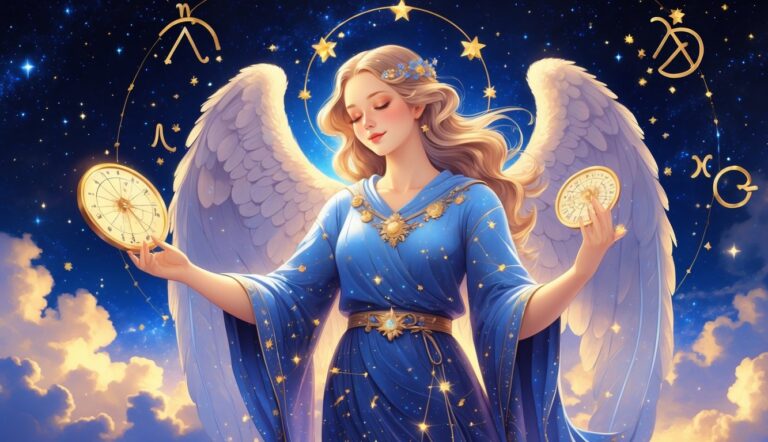Align Your Life with Your True North
The Power Quadrant System decodes your natural talents and pinpoints the career, timing and relationships that let you earn more, love deeper, and wake up eager for the day.
- Uncover your #1 high-income strength
- Draw in partners who raise your energy
- Work when your body’s clock is in “flow”
The Tree of Life symbol has captivated imaginations across cultures and millennia.
You’ve likely seen this powerful image in art, jewelry, or spiritual contexts without fully grasping its rich significance. The Tree of Life represents the interconnectedness of all living things, symbolizing unity between heaven, earth, and the underworld.
Have you ever wondered why this symbol appears in so many different belief systems? From Judaism’s Kabbalah teachings to ancient Norse mythology, the Tree of Life holds deep meaning.
It embodies concepts of growth, nourishment, and the cyclical nature of existence.
As you explore its various interpretations, you’ll discover how it can offer insights into your own life journey.
Whether you’re drawn to its aesthetic beauty or seeking spiritual enlightenment, the Tree of Life has something to offer.
You might find it represents your personal growth, family connections, or the balance between your physical and spiritual selves.
As we delve into the symbolism and significance of this timeless icon, you’ll gain a new appreciation for its enduring appeal across cultures and generations.
Historical Context of the Tree of Life Symbolism
The Tree of Life symbol has deep roots in human history, appearing across diverse cultures and belief systems.
You’ll find it in ancient Mesopotamian, Egyptian, and Norse mythologies.
In many early civilizations, trees held sacred status.
Decode Your Personal Success Blueprint
Power Quadrant System shows you the exact career, relationships, and daily rhythm that match your natural DNA—so you earn more, work happier, and connect deeper.
- Pinpoint your #1 money-making talent
- Erase conflict & attract ideal partners
- Multiply productivity with perfect timing
They represented the connection between earth and sky, mortals and divine beings.
Mesopotamian cultures viewed the Tree of Life as a source of immortality.
The Epic of Gilgamesh mentions a plant that grants eternal youth.
Ancient Egyptians associated the Tree of Life with creation myths and the afterlife.
It often appeared in tomb paintings and religious texts.
Norse mythology featured Yggdrasil, an immense ash tree connecting the nine worlds of their cosmology.
It embodied the cycle of life, death, and rebirth.
In Judaism, the Tree of Life appears in the Garden of Eden story.
It later became a central concept in Kabbalah, representing divine emanations.
Tap Into Your Built-In Success GPS
The Power Quadrant System deciphers your genetic blueprint so you can lock onto the career, income and relationships that feel effortless—and wildly rewarding.
- Zero in on your natural high-earning genius
- Sync with partners who boost your vibe
- Wake up driven, finish days fulfilled
Christianity adopted the Tree of Life symbolism, associating it with Christ and eternal life.
You’ll see it in medieval religious art and illuminated manuscripts.
The symbol’s widespread presence across cultures highlights its universal appeal.
It speaks to shared human experiences of growth, interconnectedness, and the search for meaning.
Cultural Interpretations of the Tree of Life
The Tree of Life symbol holds diverse meanings across cultures worldwide.
You’ll find this powerful image woven into the fabric of many societies, each with its unique interpretation.
In Judaism, the Tree of Life features prominently in Kabbalah teachings.
It’s seen as a source of spiritual nourishment and sustenance for all life.
Chinese traditions view the Tree of Life as a symbol of longevity and wisdom.
You might spot it in various art forms like paintings, sculptures, and intricate embroidery.
Celtic culture embraces the Tree of Life as a representation of harmony between the earthly and spiritual realms.
It symbolizes the interconnectedness of all living things.
In Norse mythology, you’ll encounter Yggdrasil, the World Tree.
This cosmic ash tree connects the nine worlds and serves as the center of the universe.
Ancient Egyptians associated the Tree of Life with creation and rebirth.
It was often depicted in tomb paintings and sacred texts.
Many Native American tribes revere the Tree of Life as a symbol of growth, strength, and connection to ancestors.
You’ll find it featured in traditional stories and artwork.
These diverse interpretations highlight the universal appeal of the Tree of Life symbol across different cultures and belief systems.
Tree of Life in World Religions
The Tree of Life holds deep symbolism across many world religions and mythologies.
It represents themes of interconnectedness, spiritual growth, and the cycle of life.
Different faiths interpret this powerful symbol in unique ways that reflect their core beliefs and philosophies.
In many traditions, the Tree of Life is linked to divine wisdom and immortality, serving as a bridge between the earthly and the spiritual realms.
Just as the tree’s roots connect deeply with the earth while its branches reach for the sky, it embodies a balance between the physical and the transcendent.
Similarly, what the sun symbolizes—life, energy, and renewal—parallels the Tree of Life’s representation of growth and eternal existence.
Christianity: The Biblical Perspective
In Christianity, the Tree of Life appears in both Genesis and Revelation.
You’ll find it in the Garden of Eden, where it represents eternal life and God’s provision.
After Adam and Eve’s fall, they’re barred from accessing it.
The Tree reappears in Revelation as a promise of restored paradise.
Its leaves are said to heal nations, symbolizing God’s redemption plan.
For Christians, this tree embodies:
• God’s life-giving power
• The promise of eternal life through Christ
• Spiritual nourishment and growth
The cross is sometimes seen as a “tree of life,” linking Christ’s sacrifice to eternal life for believers.
Buddhism: The Bodhi Tree
Buddhism reveres the Bodhi tree as the site of Buddha’s enlightenment.
You might know it as the “tree of awakening.” Under its branches, Siddhartha Gautama meditated for 49 days, attaining Buddhahood.
The Bodhi tree symbolizes:
• Spiritual awakening and enlightenment
• Inner peace and wisdom
• The path to Nirvana
Many Buddhist temples feature Bodhi trees or their descendants.
Meditating near these trees is thought to aid in spiritual growth.
The tree’s heart-shaped leaves represent love and compassion in Buddhist teachings.
Norse Mythology: Yggdrasil
In Norse mythology, Yggdrasil is the cosmic tree connecting the nine worlds.
You can imagine it as a massive ash tree with roots and branches stretching across realms.
Yggdrasil embodies:
• The interconnectedness of all life
• The cyclical nature of existence
• Cosmic order and balance
This tree supports various mythical creatures.
Its roots reach into different worlds, including the realm of the gods and the underworld.
Yggdrasil faces constant threats but always endures, symbolizing resilience and the eternal cycle of life and death.
Judaism: The Kabbalistic Tree of Life
In Jewish mysticism, the Tree of Life is a central concept of Kabbalah.
You’ll see it depicted as ten interconnected spheres called Sephirot.
Each sphere represents a divine attribute or emanation.
The Kabbalistic Tree of Life symbolizes:
• The path of spiritual growth
• Divine creative energy flowing into our world
• The structure of the cosmos and human soul
Studying this tree helps you understand the nature of God and creation.
It’s a map for spiritual development, showing how divine energy manifests in different aspects of life.
The Tree of Life in Kabbalah offers a framework for understanding the relationship between the physical and spiritual realms.
Philosophical and Spiritual Dimensions
The Tree of Life embodies profound philosophical concepts and spiritual symbolism across cultures.
It represents the interconnectedness of all existence and serves as a metaphor for personal growth and enlightenment.
Connection between Cosmos and Humanity
The Tree of Life symbolizes the link between the earthly and celestial realms.
Its roots delve deep into the ground while its branches reach toward the heavens, illustrating humanity’s connection to both the physical and spiritual worlds.
In many belief systems, this symbol represents the axis mundi – the cosmic axis connecting different planes of existence.
The Norse Yggdrasil and the Kabbalistic Tree of Life exemplify this concept, depicting various realms or aspects of reality.
You can view the Tree of Life as a map of consciousness, with each part representing different states of being or levels of awareness.
This perspective encourages you to explore your place in the grand cosmic scheme.
Symbol of Personal Growth
As a metaphor for personal development, the Tree of Life offers rich insights.
Its cyclical nature – with seasons of growth, fruition, and renewal – mirrors your own journey of self-improvement and spiritual evolution.
The branches symbolize the diverse paths you may take in life, while the trunk represents your core values and beliefs.
As you grow, you extend your reach like the tree’s expanding canopy, embracing new experiences and knowledge.
This symbol encourages you to stay rooted in your fundamental truths while continually reaching for higher understanding.
It reminds you that personal growth is a lifelong process, with each challenge and triumph contributing to your overall development.
Tree of Life in Modern Contexts
The Tree of Life symbol continues to resonate in today’s world.
You’ll find it adorning jewelry, tattoos, and home decor items.
Its timeless appeal speaks to people seeking connection and meaning.
In wellness circles, the Tree of Life represents holistic health.
You might see it in yoga studios or on meditation apps.
It reminds you of the interconnectedness of mind, body, and spirit.
Artists and designers frequently incorporate the symbol into their work.
You can spot it in paintings, sculptures, and even architectural elements.
Its intricate branches and roots offer endless creative possibilities.
The symbol has found its way into popular culture too.
You’ve likely seen it in movies, TV shows, or video games.
It often represents knowledge, wisdom, or a connection to nature.
In environmental movements, the Tree of Life serves as a powerful icon.
You’ll notice it used in campaigns promoting conservation and sustainability.
It reminds you of the importance of protecting our planet’s ecosystems.
Some modern interpretations link the symbol to family trees and ancestry.
You might come across it in genealogy software or DNA testing services.
It represents your connection to past and future generations.
The Tree of Life also appears in educational settings.
You’ll see it used to explain concepts in biology, philosophy, and cultural studies.
Its branches can illustrate diverse topics, from evolution to interconnected knowledge systems.
Artistic Representations
The Tree of Life has inspired countless artistic creations across cultures and mediums.
Its rich symbolism lends itself to diverse interpretations in visual arts, literature, and architectural designs.
Visual Arts
You’ll find the Tree of Life depicted in paintings, tapestries, and jewelry.
Celtic art often features intricate knotwork trees, symbolizing interconnectedness.
Gustav Klimt’s famous painting “Tree of Life” showcases a swirling golden tree against a dark background, representing the cycle of life and death.
In Islamic art, you might encounter stylized tree motifs in mosques and manuscripts.
These geometric designs emphasize harmony and balance.
Native American sand paintings sometimes incorporate the Tree of Life, connecting the physical and spiritual realms.
Literature
Literary works frequently use the Tree of Life as a powerful metaphor.
In Dante’s “Divine Comedy,” you’ll encounter a celestial tree representing divine justice.
The Bodhi Tree, under which Buddha attained enlightenment, appears in many Buddhist texts.
It symbolizes wisdom and spiritual awakening.
Norse mythology’s Yggdrasil, an immense ash tree connecting nine worlds, features prominently in Scandinavian literature and poetry.
Architecture and Sculpture
Architectural elements often incorporate Tree of Life imagery.
You can spot it in stained glass windows of Gothic cathedrals, representing knowledge and spiritual growth.
In Cambodia’s Angkor Wat, intricate stone carvings depict the churning of the milk ocean, with the central axis represented by a cosmic tree.
Modern sculptors have also embraced this symbol.
You might see abstract metal sculptures in public spaces, with branches reaching skyward to represent growth and aspiration.
In some synagogues, you’ll find ornate Torah arks adorned with Tree of Life motifs, symbolizing the life-giving nature of sacred teachings.
Environmental Conservation Efforts
The Tree of Life symbol has become increasingly relevant in modern environmental conservation efforts.
As you explore its significance, you’ll find it resonates deeply with the goals of protecting our planet’s biodiversity.
Many conservation organizations have adopted tree imagery in their logos and campaigns.
This visual representation helps connect people to the idea of interconnectedness in nature.
Tree planting initiatives often use Tree of Life symbolism.
These projects aim to restore ecosystems and combat climate change.
By participating, you’re contributing to the growth of our global “Tree of Life.”
Conservation education programs frequently incorporate this symbol.
It helps illustrate the importance of each species in maintaining ecological balance.
You can see how removing one branch affects the entire tree.
When you support wildlife conservation, you’re essentially preserving branches of the Tree of Life.
Each species saved helps maintain the tree’s integrity and the health of our planet’s ecosystems.
Your everyday choices impact this symbolic tree.
Reducing your carbon footprint, supporting sustainable practices, and advocating for environmental policies all contribute to nurturing our collective Tree of Life.
Tree of Life in Popular Culture
The Tree of Life has branched out beyond ancient symbolism into modern pop culture.
You’ve likely encountered this iconic image in various forms of media and art.
In the 2009 film Avatar, you see a colossal tree connecting all life on an alien planet.
This interpretation showcases the Tree of Life as a cosmic network linking diverse beings.
Visual artists often incorporate the Tree of Life into their work.
You might spot it in paintings, sculptures, or even tattoo designs.
These modern renditions blend traditional symbolism with contemporary aesthetics.
Video games sometimes feature the Tree of Life as a central plot element or visual motif.
You could find yourself on quests to protect or restore such a tree in fantasy game worlds.
In literature, authors weave the Tree of Life into stories spanning multiple genres.
You may come across it in fantasy novels, science fiction, or even metaphorical uses in literary fiction.
Music and album artwork also draw inspiration from this symbol.
You might notice Tree of Life imagery on album covers or hear lyrics referencing its concepts.
From Hollywood blockbusters to indie art pieces, the Tree of Life continues to captivate audiences.
Its adaptability allows creators to explore themes of interconnectedness, growth, and the cycle of life in fresh, exciting ways.








